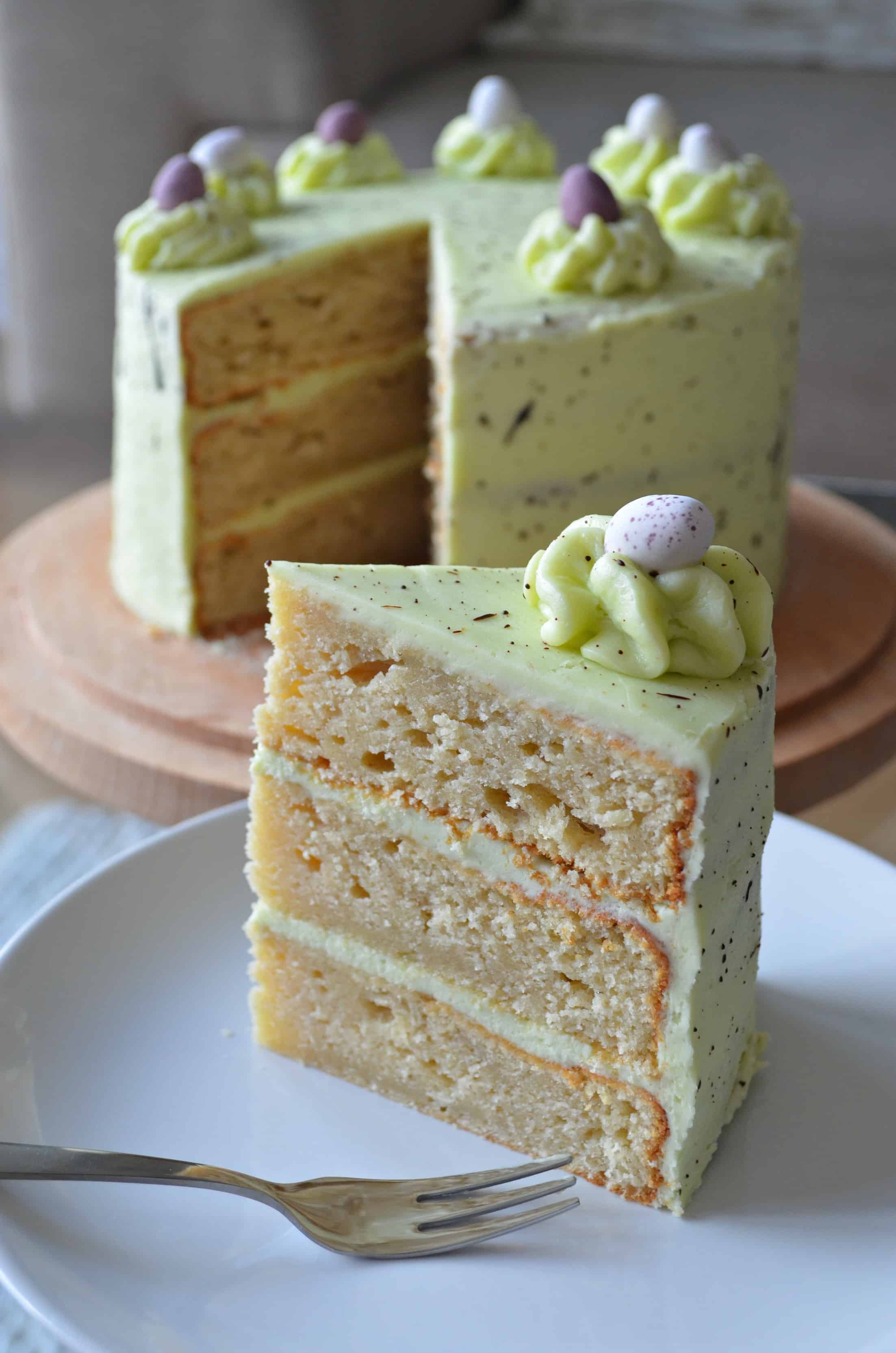
Speckled Egg Layer Cake
A three layer vanilla cake in the guise of a mini egg? Yes please!! This speckled egg layer cake is the perfect Easter centerpiece!
Ingredients
Cake
- 430 g plain flour
- 3/4 tsp baking powder
- 3/4 tsp bicarbonate of soda
- 1 tsp salt
- 345 g unsalted butter room temperature
- 350 g caster sugar
- 4 large eggs room temperature
- 2 large egg whites room temperature
- 3 tsp vanilla extract
- 360 ml buttermilk
Frosting
- 287 g unsalted butter room temperature
- 580 g icing sugar
- 80 ml double cream
- 3 tsp vanilla extract
- 1/8 tsp salt
- green gel food colouring or colour of your choice
Decoration
- 1 tsp cocoa powder
- 2 tsp water
- mini eggs to decorate
Instructions
- For the cakes: Pre-heat your oven to Gas Mark 4/350F/180C and grease and lightly flour three 8-inch cake tins. In a large bowl, briefly whisk together the flour, baking powder, bicarbonate of soda and salt. Then set aside. Next, using an electric mixer beat the butter on a high speed until smooth and creamy, about one minute. Then add the sugar and beat on a high speed for 5 full minutes until creamed together well. On a medium-high speed, add one whole egg at a time, beating well after each addition until all 4 whole eggs are mixed in. Beat in the vanilla extract.
- Using a low speed on the electric mixer add the dry ingredients in three additions alternating with the buttermilk, beginning and ending with the dry ingredients. Ensure you only mix until everything is just incorporated, over mixing will result in a close-textured greasy sponge. The batter will be quite thick! Finally, whisk the 2 egg whites until thick, foamy and soft peaks form - about 3 minutes by hand. Then gently fold into the batter.
- Spoon the batter evenly into each cake tin, then bake for around 25 minutes or until the sponges are baked through. Test by inserting a toothpick into the centre of the cake - if it comes our clean, the sponges are done. Allow the cakes to cool completely in the pans set on a wire rack.
- For the frosting: Beat the butter on a medium speed until creamy in a large bowl. Add the icing sugar, cream, vanilla extract and salt - mixing on a low speed initially. Increase to a high speed and beat for 3 full minutes once the mixture has begun to incorporate. Add more icing sugar if the frosting is too thin, or more cream if the frosting is too thick. Also, add a pinch of salt if the frosting is too sweet. Finally, gradually add the food colouring until you get to your desired colour. Add a little at a time, as the colour can change surprisingly quickly!
- To assemble: Place one cake on your cake stand and evenly cover the top with frosting. Place the second sponge on top, and again evenly cover with frosting. Finally, place the third sponge on top and spread a thin layer over the top and sides of the cake to create a crumb coat. Place the cake in the fridge for 10 minutes to firm up.
- Then place 3/4 of the remaining frosting into a piping bag, cut of the end and pipe a ring on the top of the cake and one large ring around the centre of the side. Spread this out with a palette knife, to create an even layer on both the top and sides. Then using a side scraper, run it around the edge of the cake at a sharp angle until the desired smoothness is achieved. Next, put the remaining frosting into a piping bag fitted with a star nozzle. Pipe swirls evenly around the top edge of the cake.
- For the decoration: Mix the cocoa powder with water in a small bowl to create a paste. You may need to add more water/cocoa powder to achieve the desired paste. Then using a pastry brush flick specks all over the cake. I achieved this by dipping the brush into the paste, and then running my finger down the bristles. Then, top each piped swirl with a mini egg.